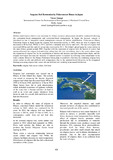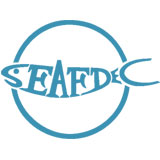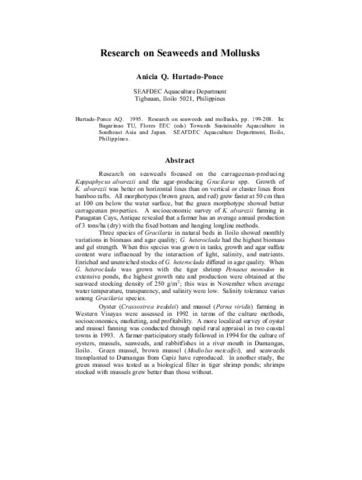Seagrass Bed Restoration by Fishermen at Hinase in Japan
Share
Abstract
Habitat rehabilitation which is very important for fishery resources enhancement should be conducted following the community-based management and ecosystem-based management. In Japan, the Satoumi concept is introduced as one of integrated coastal management concepts for habitat rehabilitation. Fishermen at Hinase Fishermen Union in Japan began the eelgrass bed restoration activity in 1985, when the area of eelgrass bed decreased to 80 ha from 590 ha in 1945, and have continued such activity until now. The area of eelgrass bed recovered 200 ha and fish catch by set net also recovered in 2011. The fishers' group began the oyster culture in the same fishery ground around 1985. Together with the expansion of eelgrass bed, the harvest of oysters had increased because the eelgrass bed and oyster culture have the win-win relation, that is, the oyster culture helps the expansion of eelgrass bed by the assimilation of detritus and increase sun light transmittance depth, and the eelgrass bed helped decrease the mortality of cultured oysters in summer by lowering water temperature in the water column. Moreover the Hinase Fishermen Union plans to establish a fish farm by combining eelgrass bed, oyster culture in rafts and artificial reefs arrangement, that is, the spawned local fish grows in the designated farming area using eelgrass bed, oyster raft and artificial reef, resulting in increased fish harvest.
Suggested Citation
Yanagi, T. (2016). Seagrass bed restoration by fishermen at Hinase in Japan. In H. Kawamura, T. Iwata, Y. Theparoonrat, N. Manajit, & V. T. Sulit (Eds.), Consolidating the Strategies for Fishery Resources Enhancement in Southeast Asia. Proceedings of the Symposium on Strategy for Fisheries Resources Enhancement in the Southeast Asian Region, Pattaya, Thailand, 27-30 July 2015 (pp. 121-122). Samutprakan, Thailand: Training Department, Southeast Asian Fisheries Development Center.
Paksa
environmental degradation  ; stocking density
; stocking density  ; resource management
; resource management  ; survival
; survival  ; Catch/effort; brackishwater aquaculture
; Catch/effort; brackishwater aquaculture  ; growth
; growth  ; socioeconomic aspects
; socioeconomic aspects  ; brackishwater environment
; brackishwater environment  ; fishing grounds
; fishing grounds  ; feeding
; feeding  ; stocking (organisms)
; stocking (organisms)  ; feeds
; feeds  ; shrimp culture
; shrimp culture  ; aquaculture regulations
; aquaculture regulations  ; resource conservation
; resource conservation  ; estuaries
; estuaries  ; carrying capacity
; carrying capacity  ; stock assessment
; stock assessment  ; environmental impact
; environmental impact  ; livelihoods
; livelihoods  ; shrimp fisheries
; shrimp fisheries  ; cage culture
; cage culture  ; culture effects
; culture effects  ; stocks
; stocks  ; Philippines; Penaeus monodon
; Philippines; Penaeus monodon
 ; stocking density
; stocking density  ; resource management
; resource management  ; survival
; survival  ; Catch/effort; brackishwater aquaculture
; Catch/effort; brackishwater aquaculture  ; growth
; growth  ; socioeconomic aspects
; socioeconomic aspects  ; brackishwater environment
; brackishwater environment  ; fishing grounds
; fishing grounds  ; feeding
; feeding  ; stocking (organisms)
; stocking (organisms)  ; feeds
; feeds  ; shrimp culture
; shrimp culture  ; aquaculture regulations
; aquaculture regulations  ; resource conservation
; resource conservation  ; estuaries
; estuaries  ; carrying capacity
; carrying capacity  ; stock assessment
; stock assessment  ; environmental impact
; environmental impact  ; livelihoods
; livelihoods  ; shrimp fisheries
; shrimp fisheries  ; cage culture
; cage culture  ; culture effects
; culture effects  ; stocks
; stocks  ; Philippines; Penaeus monodon
; Philippines; Penaeus monodon
Related items
Showing items related by title, author, creator and subject.
-
Aquaculture-based Enhancement and Restoration of Many-colored Abalone Resources (Haliotis diversicolor Reeve, 1846) in Bach Long VI National Marine Protected Area, Vietnam
Chieu, Hoang Dinh; Phuong, Lai Duy; Duy, Do Anh; Tuan, Bui Minh; Thoa, Nguyen Kim (Training Department, Southeast Asian Fisheries Development Center, 2016)Many-colored abalone (Haliotis diversicolor) is high commercial species in Vietnam. Meanwhile, these resources have been over-exploited, thus, artificial breeding was implemented to restore natural abalone resources. After ... -
Aquaculture-based restoration and stock enhancement of tiger shrimps in the Philippines
Altamirano, Jon; Salayo, Nerissa; Kurokura, Hisashi; Fushimi, Hiroshi; Ishikawa, Satoshi (Training Department, Southeast Asian Fisheries Development Center, 2016)
In central Philippines, the Aquaculture Department of the Southeast Asian Fisheries Development Center (SEAFDEC/AQD), with strong collaboration and support from the Research Institute for Humanity and Nature (RIHN) of ... -
Research on seaweeds and mollusks
Hurtado-Ponce, Anicia Q. (Aquaculture Department, Southeast Asian Fisheries Development Center, 1995)Research on seaweeds focused on the carrageenan-producing Kappaphycus alvarezii and the agar-producing Gracilaria spp. Growth of K. alvarezii was better on horizontal lines than on vertical or cluster lines from bamboo ...




